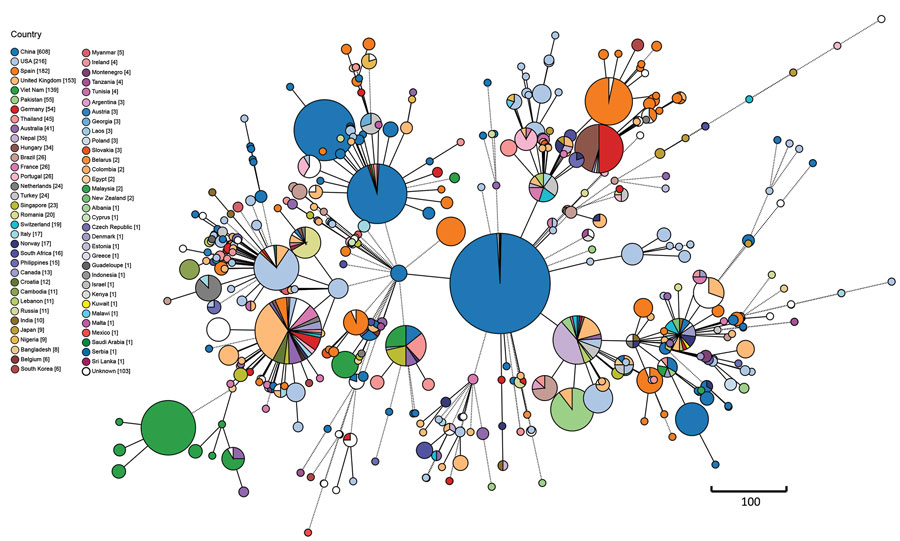Volume 29, Number 11—November 2023
Research
Global Phylogeography and Genomic Epidemiology of Carbapenem-Resistant blaOXA-232–Carrying Klebsiella pneumoniae Sequence Type 15 Lineage
Figure 3

Figure 3. Minimum spanning tree based on core genome MLST analysis of global blaOXA-232–carrying carbapenem-resistant Klebsiella pneumoniae sequence type 15 isolates. Core genome multilocus sequence typing scheme with clade alert distance set as ≤20 alleles. Line lengths connecting each circle depict clonal relationships between isolates. Colors of circles indicate different countries. Numbers in square brackets in the key indicate numbers of isolates recovered from each country. Scale bar represents genetic distance (allelic differences).
Page created: September 05, 2023
Page updated: October 23, 2023
Page reviewed: October 23, 2023
The conclusions, findings, and opinions expressed by authors contributing to this journal do not necessarily reflect the official position of the U.S. Department of Health and Human Services, the Public Health Service, the Centers for Disease Control and Prevention, or the authors' affiliated institutions. Use of trade names is for identification only and does not imply endorsement by any of the groups named above.